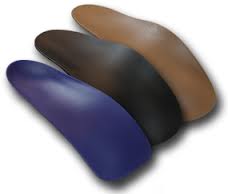Every day, the average person makes 5,210 to 7,192 steps, according to 2004 study. Walking is a vital function of our daily lives. We walk to perform daily tasks in our homes and at our jobs. We walk for exercise to strengthen our bodies and maintain our weight. But have you ever really thought about the how you walk?
When you walk, you use your whole body to propel yourself forward or backward, moving your limbs in synchronization while maintaining your balance and coordination.
The process of walking is referred to as the gait cycle. The cycle involves the motions from when you initially place the heel of your foot on the ground until that same heel touches the ground for the second time.
The normal gait cycle is divided into two phases – stance and swing.
- Stance is the time when your foot is on the ground. Your foot is in the stance phase for about 60% of the time in the gait cycle.
- Swing is the time when your non-weight-bearing foot is in the air. Your foot is in the swing phase about 40% of the time during the gait cycle.
During the stance phase, your foot goes through a series of movements called pronation and supination.
- Pronation – When your heel hits the ground, the arch of your foot collapses slightly. This process occurs, so your foot is more flexible and able to absorb the impact of the step and any irregularities in the ground. During pronation, your leg, knee and thigh rotate inward, causing your spine to flex forward.
- Supination – When you push off with your toes so you can move forward, this is the supination movement. During this movement, your foot reforms its arch and uses your foot as a lever to propel yourself forward. During supination, your leg, knee and thigh rotate outward, causing your spine to extend backward.
When pronation or supination don’t occur or occur too much, that’s when problems can occur, leading to foot conditions, like plantar fasciitis or metatarsalgia, and pain in your feet, knees, hips and back.
- Overpronation occurs when your ankles tilt inward too much, causing you to carry your weight on your inner soles. The muscles in your lower legs will pull and your knees will turn inward, leading to decreased stability, a shorter stride and poorer balance. Overpronation is the cause of 90-95% of all foot problems.
- Oversupination occurs when the outer muscles in your lower legs are stretched too much, causing your knees to bow outward. This movement can lead to ligament injuries, muscle imbalance and spinal issues. Oversupination is the cause of 5-10% of foot problems.
Overpronation and oversupination can lead to muscle fatigue and microscopic tears that can trigger inflammation and pain.
ezWalker® Custom Orthotics Realign Your Gait
 If you think you may be overpronating or oversupinating, have your gait evaluated by a certified professional. You may want to consider wearing custom orthotics, like ezWalker® Performance Custom Orthotics, to strategically raise the arches of your feet and provide them with proper biomechanical support. ezWalker® Custom Orthotics guide your feet to walk from lateral heel to medial forefoot, so each step is controlled throughout the gait cycle. By wearing ezWalker® Custom Orthotics, you’ll experience less stress and strain on your feet, knees, hips and back.
If you think you may be overpronating or oversupinating, have your gait evaluated by a certified professional. You may want to consider wearing custom orthotics, like ezWalker® Performance Custom Orthotics, to strategically raise the arches of your feet and provide them with proper biomechanical support. ezWalker® Custom Orthotics guide your feet to walk from lateral heel to medial forefoot, so each step is controlled throughout the gait cycle. By wearing ezWalker® Custom Orthotics, you’ll experience less stress and strain on your feet, knees, hips and back.
For more information on how ezWalker® Performance Custom Orthotics can improve your foot mechanics, contact us. To order your pair of ezWalker® Custom Orthotics, visit the WalkEZStore.
Remember … when your feet feel good, you feel good.®


